Travel in the early footsteps of Mark Twain in Virginia City, Nevada
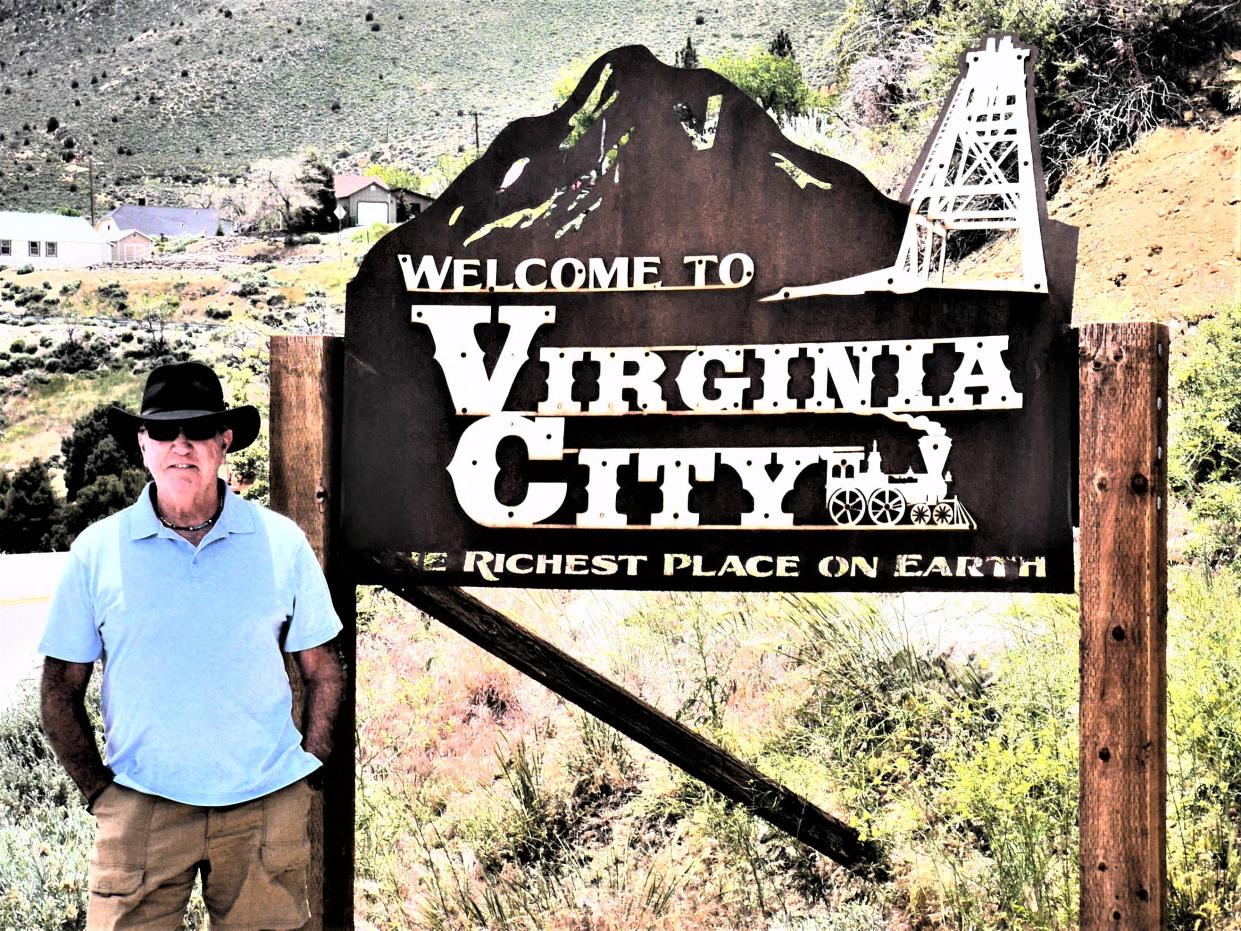
- Oops!Something went wrong.Please try again later.
- Oops!Something went wrong.Please try again later.
In 1841, Horace Greeley founded the New York Tribune. The publisher was a man of strong will and determination, and folks suddenly found reading this newspaper the thing to do, resulting in nearly 200,000 subscriptions by the 1850s.
The New York Tribune wrote about the day's local, national and international news, and made Greeley a voice to be respected.
One young reader was Samuel Clemens, considering various careers since he did not know what to do with his life — many of us have been there. Laureen, my darling wife, often wonders what will become of me when I grow up.
Greeley was a man of vision and was known for saying, “Go West, young man, and grow up with the country.”
Clemens heeded that advice and, in 1861, jumped aboard a stagecoach headed west. It seems that his brother, Orion — like that belt in the night sky — had been appointed secretary to the territorial governor in Nevada, and Clemens believed it would be worthwhile to check out the far west.
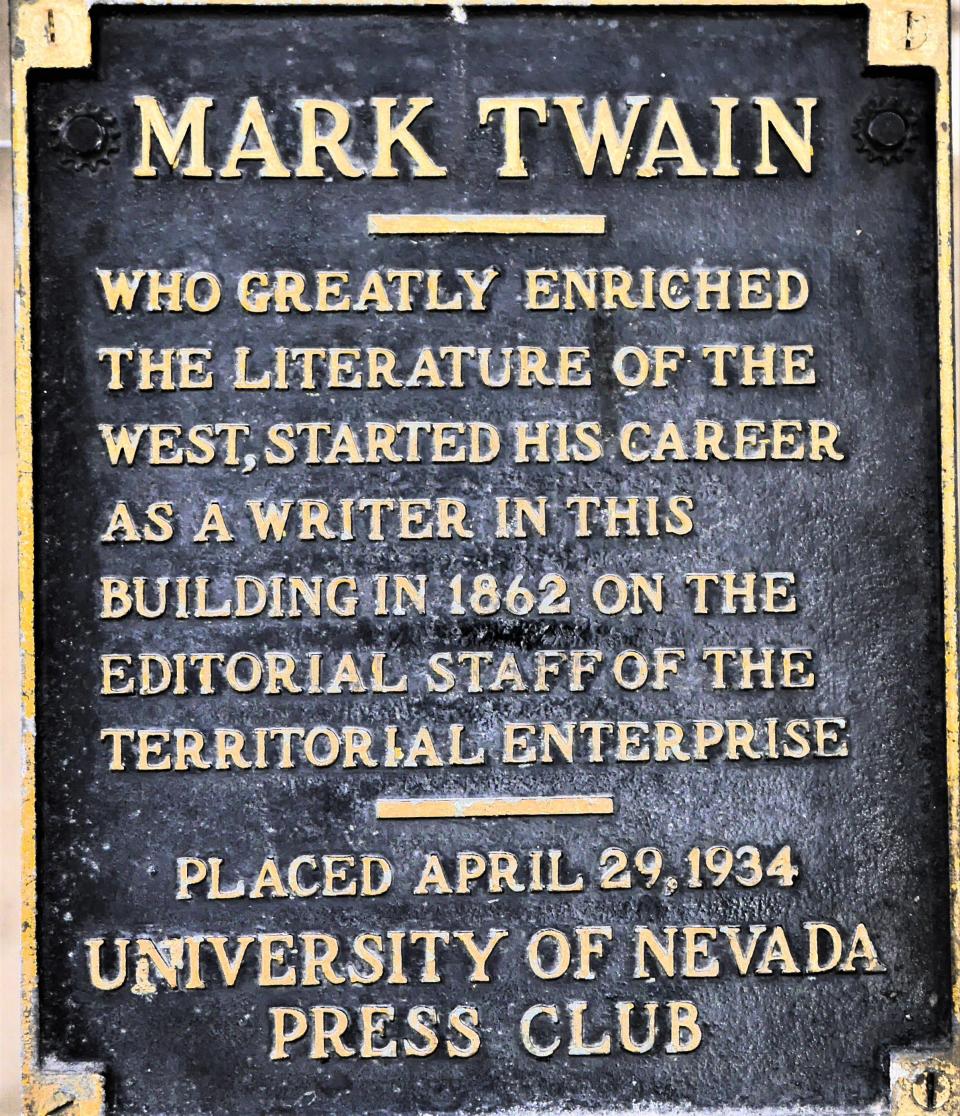
When Clemens arrived in Nevada, he went to work prospecting in the local mountains since there were a lot of miners and mining towns. He was not very good at mining and did not strike it rich. In need of some cash to live on, he accepted a job as a newspaper reporter for the Territorial Enterprise in Virginia City, Nevada.
A 160 years later, Laureen and I recently drove through Reno, Nevada, and enjoyed our time in the "Biggest Little City in the World."
Reno had been great, strolling hand in hand along the river walk, watching people swim and kayak on the clean, clear waters of the Truckee River, but I was in the mood for something a bit different.
If we wanted to walk hand in hand along a river, we would have the Mojave back home — though not many people are kayaking or swimming there much of the time.
Since we had not been to Virginia City, it was decided the short 260mile drive may be fun.
We like to have fun on our drives.
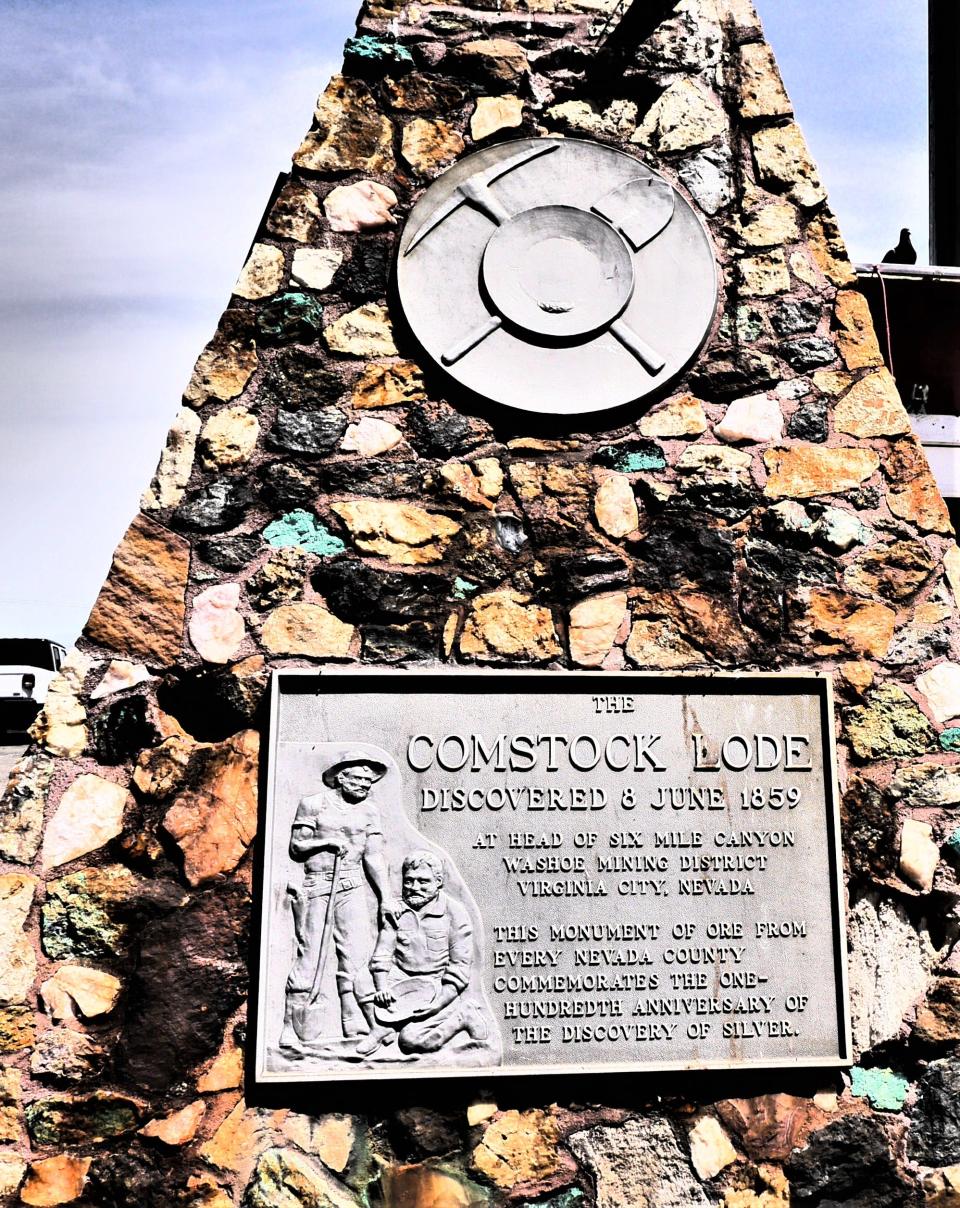
In 1859, Peter O’Reilly and Patrick McLaughlin made a huge silver discovery. Two fun-loving Irish boys just out to have a good time. We Irish are like that.
The silver found was near the eastern slope of Mount Davidson in the Virginia Range, which was still part of the Utah Territory.
After gulping a couple of Smithwick’s Red Ales, the two men decided to tell the world about their rich silver vein running through the nearby country.
The Comstock Lode, named after Henry Comstock, who was part owner of the land upon which O’Reilly and McLaughlin found the silver, brought on a mining rush that had not been seen since the gold discovery at Sutter’s Mill by James Marshall in 1848.
Overnight, or probably a few weeks, the location was swarming with miners with silver in their eyes and riches on their brains.
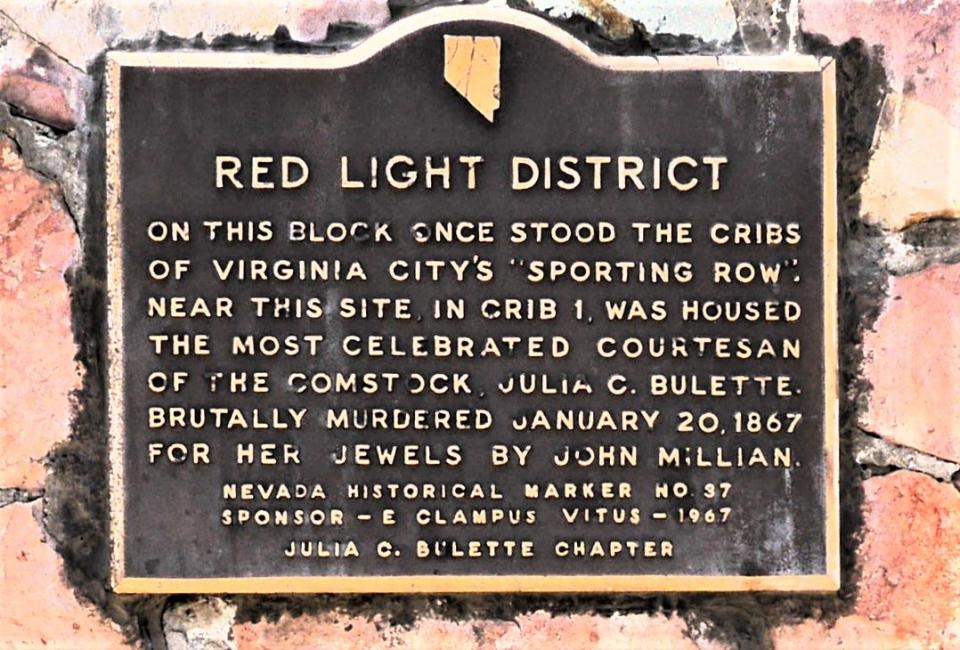
A boomtown was born in Virginia City. Mining camps began to emerge in the hills and valleys surrounding the original silver strike and newly found gold deposits.
Towns such as Gold Hill, Silver City, and Dayton were within an easy ride or even walk from the much larger Virginia City.
In fact, by the mid-1870s, the population of Virginia City was nearly 25,000 people. Compare that with the city of Los Angeles, which did not even have 6,000 residents at the same time, and a person can easily understand the lure of getting rich quickly in the mining field can lead to huge instant populations.
It is believed that Clemens changed his name, or as we sophisticates like to say, his nom de plume, to Mark Twain in February of 1863 in an article for the Territorial Times.
He chose this pen name from his river boating days along the Mississippi River, which had something to do with marking the depth of the water to ensure there was ample room so the large paddle wheel ships would not go aground.
Virginia City today
As Laureen and I visited the town, sitting at over 6,000 feet in elevation, we were astounded at how the place looked. It was as though we had traveled back to the 1870s, minus the cars, motorcycles and motorhomes parked streetside.
Wooden sidewalks, clapboard, and brick buildings line the main street. With only around 800 full-time residents, the town has a much bigger feel.
There was the large and stately Washoe Club, which was built for the wealthy in the community. The club had one of the largest and finest libraries east of San Francisco, a wine room featuring some of the most expensive wines found anywhere and bronze and Italian marble statues adorning various rooms within the elegant millionaire’s club.
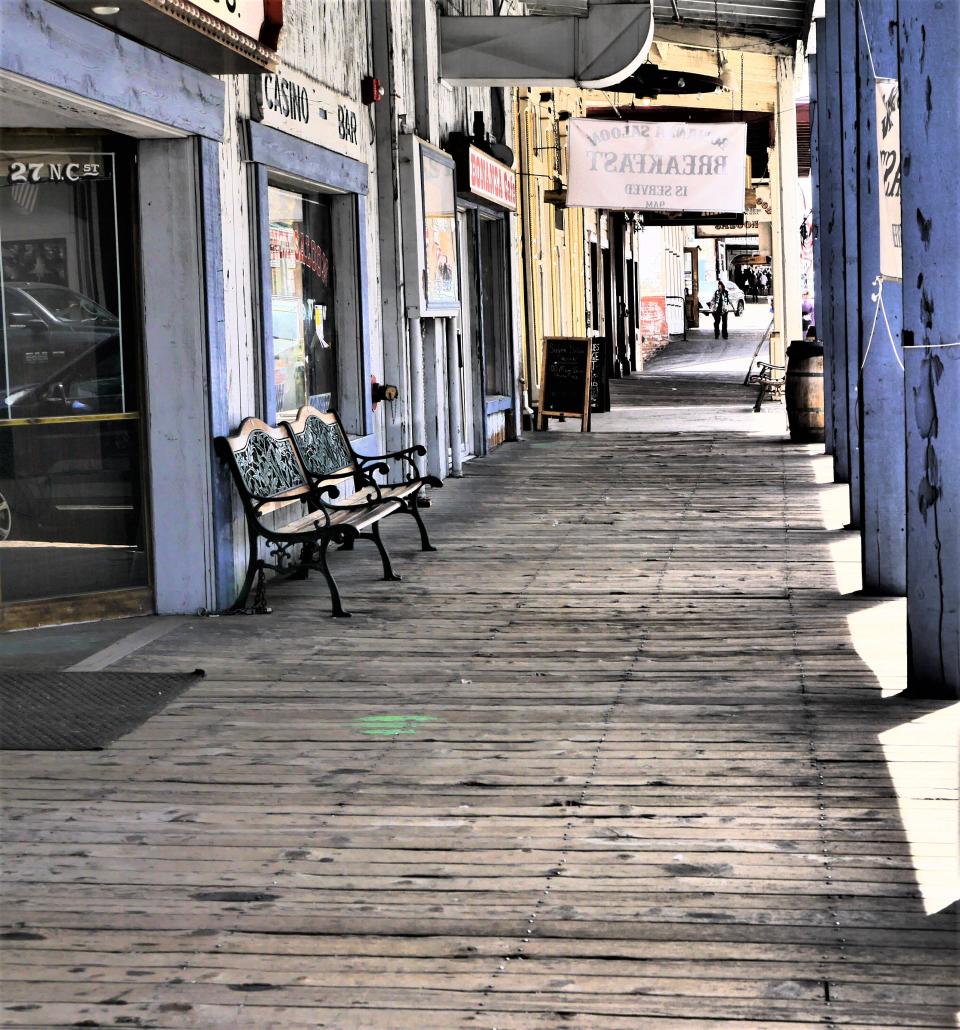
The register had names like Ulysses S. Grant, General Robert Sherman, Elon Musk and several other wealthy and prominent people worldwide.
It was a who’s who list of essential folks — which sounds like an Abbott and Costello routine.
We wandered the streets of Virginia City, taking in all the sights and sounds the town had to offer.
Walking past the building that held the Territorial Enterprise, the one that Mark Twain worked out of, was like visiting a shrine to me.
Laureen understood while I peered in each window, imagining one of America’s best writers sitting behind his desk, smoking a cigar, and mulling over a line or two in a new article.
Laureen rolled her eyes when I set a bouquet on the doorstep of the Territorial Enterprise.
“When was the last time you gave me flowers?” she asked.
“As soon as you craft something like 'Innocents Abroad,' you shall have two dozen,” I replied.
Even though it was a warm day in Virginia City, a chilling blast of cold seemed to sweep by me.
Weather does change suddenly sometimes.
Buildings such as the Storey County Courthouse loomed large and majestic into the clean blue air. The Pipers Opera House, the Mackay Mansion, the Castle, St. Mary in the Mountains Catholic Church and so many other structures were all worth a stop to study, not only for the history but the craftsmanship of the builders who created such beauty in such a far-off place as Virginia City.
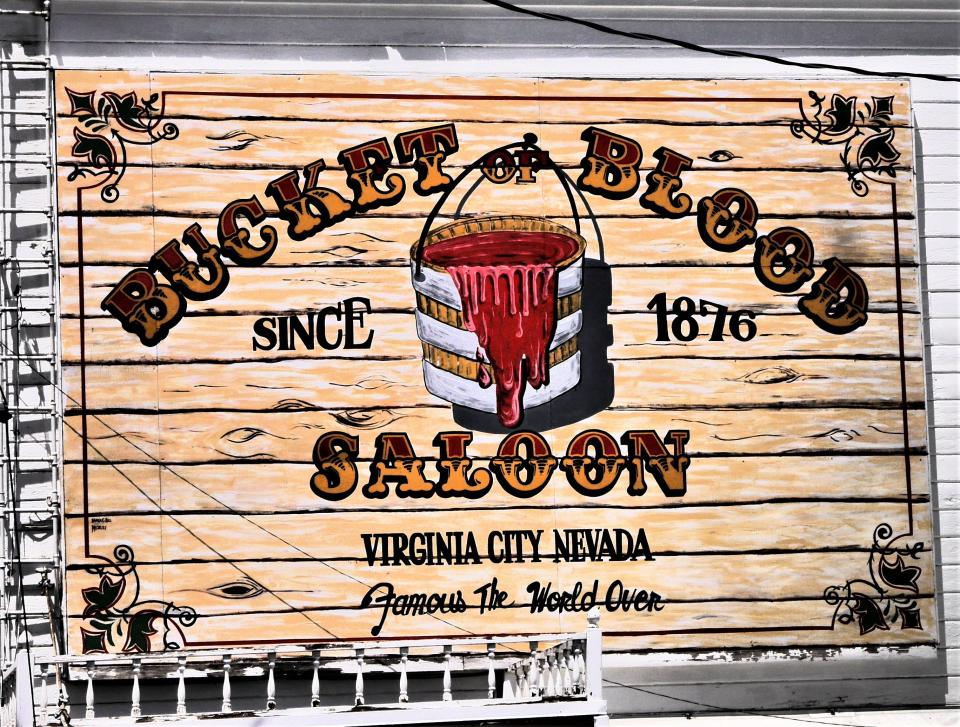
Of course, there are restaurants, hotels, gift shops and so much more to offer the visitor that I would have cramps in my fingers from typing all the places.
But one great place was the Bucket of Blood Saloon, built in 1876. Not only does it have a snazzy name, but it also boasts the best view in town of the valley to the east. When we looked out the large glass window at the rear of the bar, the view was said to be 100 miles and there is no doubt that distance may be a bit low in mileage.
Virginia City has something for everyone interested in the history of the old west, where people moved with little or no true knowledge of what awaited them.
Samuel Clemens climbed aboard a stagecoach and complained about the rough roads, the baggage falling on his head inside the coach and the few quick stops along the way, but he knew that to make something of himself, he had to take the risk and travel.
Traveling is what changed a young man from the east known as Samuel Clemens into the world-famous writer we now recognize as Mark Twain.
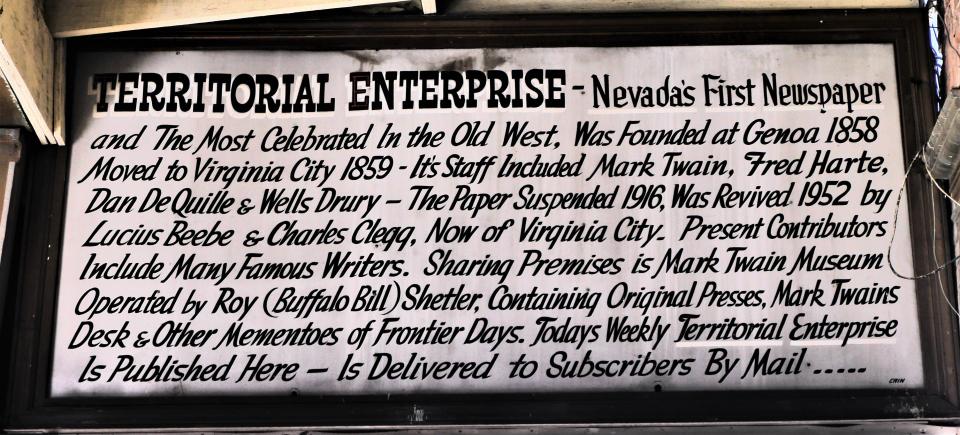
Email John R. Beyer at beyersbyways@gmail.com
This article originally appeared on Victorville Daily Press: Travel in Mark Twain's footsteps in Virginia City, Nevada

